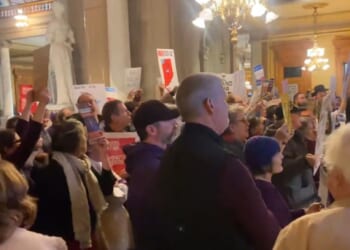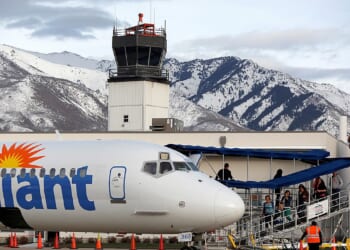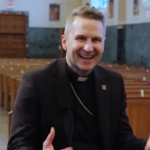The Gaza ceasefire is a chance to cement and further expand Israel’s normalization with the rest of the Arab world.
After Hamas’s massacre of October 7 and two years of devastating war in Gaza, a US-brokered ceasefire has finally taken hold. Pushed by President Donald Trump, the truce, accompanied by hostage releases, aid surges, and phased Israeli withdrawals, offers more than a pause in fighting; it marks a potential turning point for the region. Related to its success lies a question first posed in 2020: can the Abraham Accords become not only a diplomatic milestone but also the foundation for durable peace?
When the United Arab Emirates and Bahrain normalized relations with Israel five years ago, later joined by Morocco, their decision was hailed as a pragmatic break from decades of diplomatic stagnation. The accords created channels of cooperation in technology, trade, and security while maintaining the vision of a negotiated two-state solution. Over time, they delivered concrete dividends: more than a dozen daily flights between Tel Aviv and the UAE, joint ventures in renewable energy and desalination, and coordination that has quietly helped thwart terrorist threats.
The war in Gaza, however, tested the accords’ resilience. Public anger across the Arab world and political fractures within Israel raised doubts about whether normalization could survive another round of violence. Inside Israel, the rise of radical political discourse has strained relations with Arab partners and deepened fears that the window for a two-state solution is closing.
Yet despite these headwinds, the network of relations forged since 2020 enabled quiet mediation, humanitarian coordination, and sustained communication channels at a moment when they were most needed. The accords, once criticized as detached from the Palestinian issue, proved unexpectedly relevant and may yet prove vital to reviving diplomacy around it.
The present ceasefire is not a final peace, but rather a pause and an immense opportunity. For Washington, it speaks to the logic of the Abraham Accords as a stabilizing architecture in a volatile region. US officials refer to expanding participation to Saudi Arabia, Oman, and other Muslim-majority countries drawn to the accords’ economic allure. Riyadh’s calculus has long been clear: meaningful progress toward Palestinian statehood, combined with American security guarantees and investment incentives, in exchange for normalization. The truce has cracked that door ajar.
The next stage will depend on turning normalization from an event into a longer-term web of ties, maybe an entire ecosystem. A broader, institutionalized framework, anchored in economic cooperation, infrastructure, and security dialogue, could use the current ceasefire to create an opening for a sustainable regional order. Bilateral trade between the UAE and Israel already exceeds $3 billion annually. Broader initiatives such as a regional free-trade zone, shared investment funds for reconstruction, and climate-resilience projects could embed peace in everyday interdependence.
If the accords are to realize White House envoy Steve Witkoff’s prediction that they will soon be “substantially expanding,” they must evolve. Without Palestinian participation, regional normalization will remain incomplete. The devastation in Gaza and the persistent vacuum in Palestinian governance have underscored the urgency of rethinking inclusion. The accords should move from being agreements about the region to becoming partnerships for the region.
Some of this is already happening. The UAE has become the most significant bilateral donor for Gaza, while the Abraham Accords Caucus in the US Congress is drafting legislation to support reconstruction aligned with deradicalization and regional integration. Equally significant, Emirati diplomacy was instrumental in halting Israel’s planned annexation of the West Bank in 2020 and in 2025. Today, Abu Dhabi’s renewed leverage has once again proven decisive, with President Trump publicly stating that such annexation will not be permitted under the current US-brokered framework.
The path forward is hardly smooth. Hezbollah, the Houthis, and assorted militias continue posing a threat and remain capable of sabotage. In Arab capitals, public sentiment still resists normalization absent justice for Palestinians. The persistence of far-right narratives in Israeli politics, openly dismissive of coexistence, risks eroding the moral foundation of the accords and alienating their Arab partners. Unless diplomacy fills the vacuum, spoilers will.
Still, the accords’ endurance amid war has strengthened the initial calculus. They demonstrated that dialogue need not be hostage to extremism, and that engagement, backed by credible US diplomacy, can produce tangible results even in crisis. Without the accords, coordination over humanitarian aid might have collapsed entirely. With them, a minimal trust architecture survived.
The next five years should focus on establishing multilateral mechanisms to coordinate aid, develop energy interconnections, and enhance crisis response capabilities. That means elevating the accords from bilateral normalization to a regional framework: linking economic zones, climate finance, and digital trade. Proposals for shared early-warning systems may sound ambitious, but they express a logic already in motion: peace is most durable when it produces shared value.
Equally important is a narrative shift. The accords were born of pragmatism; their future depends on inclusion. The Arab and Israeli publics need to see benefits that extend beyond diplomacy, such as scholarship exchanges, small-business partnerships, and climate-adaptation projects that enhance daily life. In this sense, the Abraham Accords are a test of whether the Middle East can learn to cooperate without aiming at perfection.
The International Crisis Group recently described the ceasefire as “vital, but only a start.” The same could be said about the Abraham Accords. They are not flawless, not final—but they are forward. History may remember them not as the end of conflict, but as the beginning of convergence—a defining moment for a Middle East more used to managing crises than to shaping its long-awaited, interdependent future.
About the Authors: Eric Alter and Nickolay Mladenov
Eric Alter is the Dean of the Anwar Gargash Diplomatic Academy in Abu Dhabi and a professor of international law and diplomacy. He is a former United Nations civil servant and a senior consultant.
Nickolay Mladenov is the Director General of the Anwar Gargash Diplomatic Academy. He served as the Bulgarian Minister of Foreign Affairs from 2010 to 2013 and as the Minister of Defense from 2009 to 2010.
Image: Noam Galai / Shutterstock.com.
















